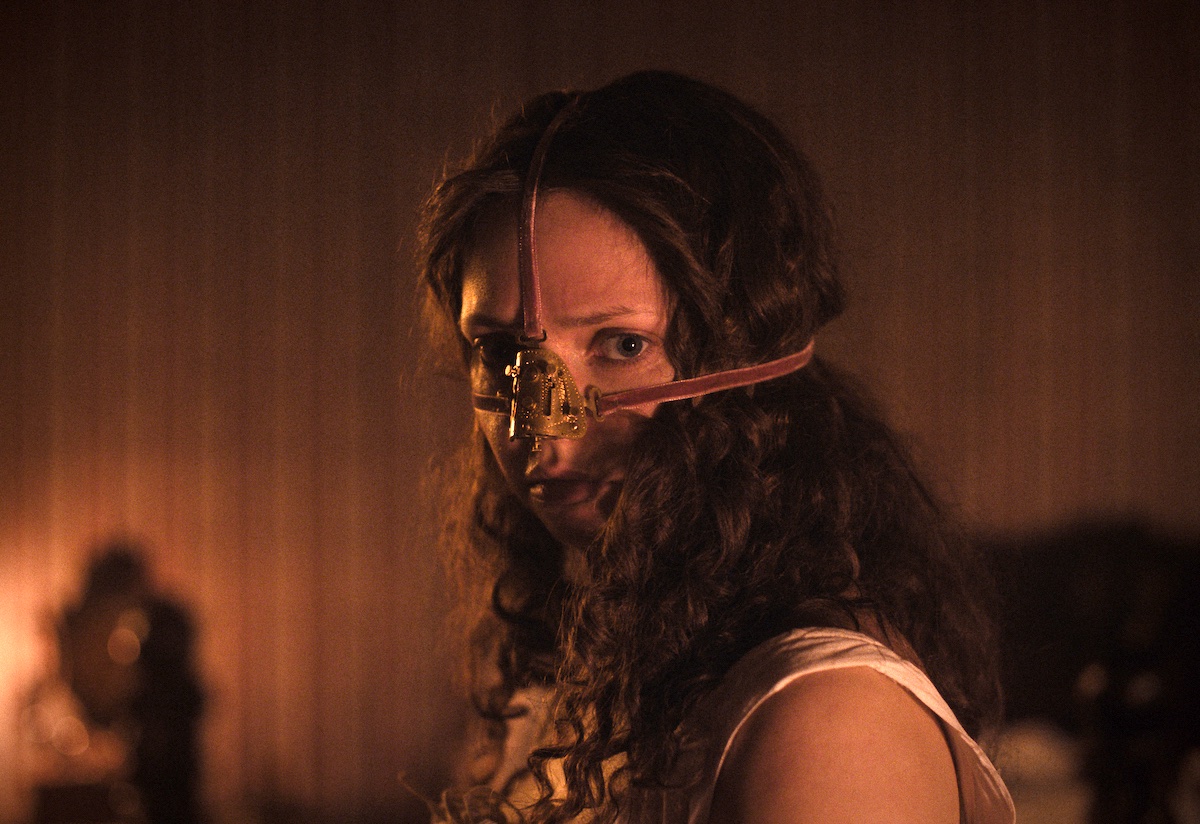Disney’s Cinderella (1950) traverses grand balls, a dashing prince and a perfectly fit glass slipper – the classic happily ever after. Now, imagine the story centres on Cinderella’s stepsister Elvira, the prince is uninteresting, and toes are chopped off to fit into the slipper. You get the ultimate fairytale nightmare: Norwegian director Emilie Kristine Blichfeldt’s debut feature, The Ugly Stepsister (2025).
Set in nineteenth-century Sweden, Blichfeldt’s macabre fairytale body horror draws from the ghastly Brothers Grimm version, with Elvira taking extreme measures to win the prince’s heart. Think a gory rhinoplasty job without anaesthetic, false eyelashes sewn using sharp hooks, and a tapeworm diet – the early form of Ozempic.
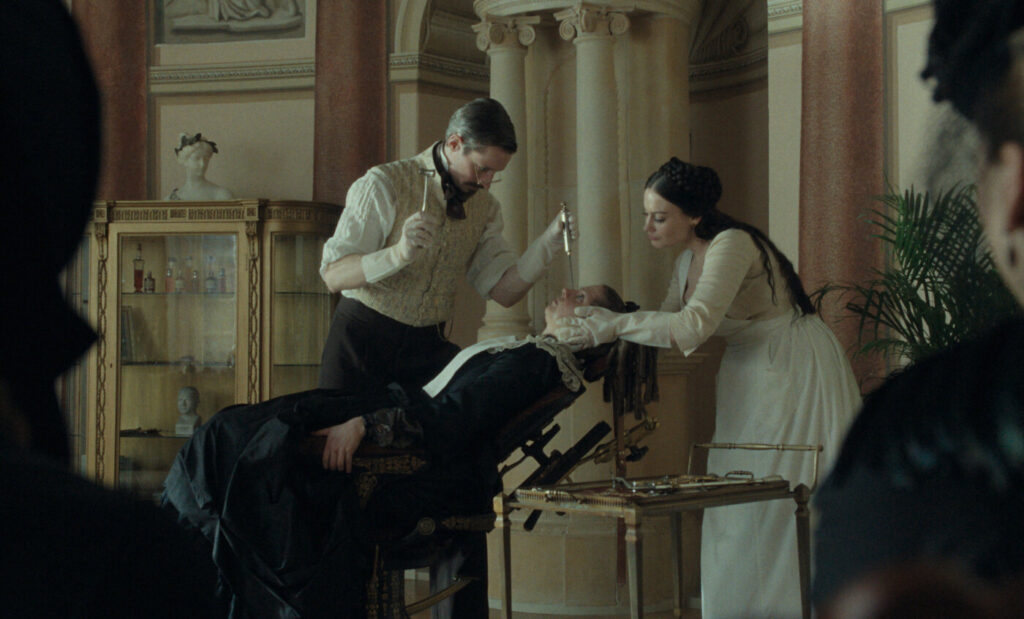
Given my equal disgust and delight when watching Coralie Fargeat’s body horror The Substance (2024), I knew I’d enjoy Blichfeldt’s film, with its feminist undertones and use of Vilde Tuv’s 70s-inspired dark synth music score. Blichfeldt discusses how “real beauty might lie on the inside”, but the “real value we give to people” is “based on their outer appearance”. This is flawlessly executed in the film. Bones (and noses) literally must break to cure the disease of ugliness and achieve physical perfection, and Blichfeldt expertly visualises the internalisation of socially constructed beauty standards.
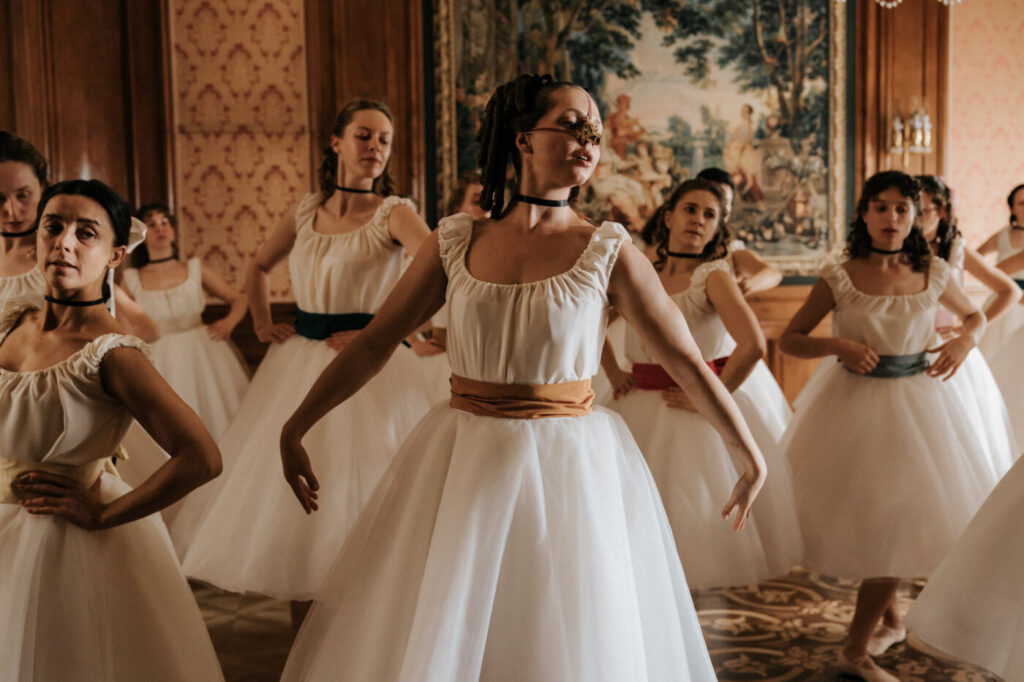
The Ugly Stepsister follows the hopeful, naïve Elvira (Lea Myren), obsessed with Prince Julian (Isac Calmroth). Elvira’s mother, Rebeka (Ane Dahl Torp), marries Otto (Ralph Carlsson), and Elvira and her sister Alma (Flo Fagerli) move into his grand mansion, where they meet his beautiful daughter, Agnes, or Cinderella (Thea Sofie Loch Næss). However, Rebeka is quickly made a widow, and Elvira’s family face financial ruin. So, Rebeka insists that Elvira attend the ball and marry Prince Julian. Indeed, beauty has a price, and Elvira’s body is the cost.
“You’re changing your outside to fit what you know is on the inside.” The finishing school headmistress, Miss Sophie, to Elvira.
Elvira faces brutal cosmetic procedures from Dr. Esthétique (Adam Lundgren), demanding dance lessons, and a tapeworm weight-loss diet prescribed by her finishing school headmistress (Cecilia Forss). Plus, a slipper that just won’t fit. The obsessive pursuit for perfection eats Elvira up inside at the same time the monstrous tapeworm does, with audiences just waiting for the inevitable gruesome culmination.
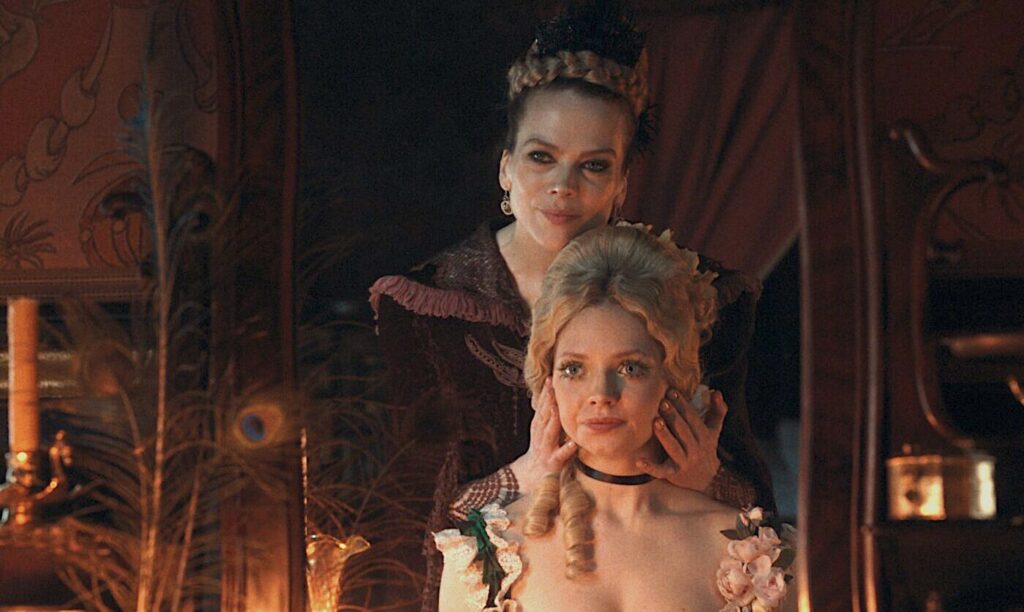
Blichfeldt works brilliantly with cinematographer Marcel Zyskind and production designers Sabine Hviid and Klaudia Klimka-Bartczak to express the horrors of beauty. Indeed, the opening credits scene displays a dining table cluttered with bloodied cosmetic chisels, maggots squirming in spaghetti bowls, and ribbons and thick tapeworms tucked between bright flowers and jewellery. This blatantly hints at Elvira’s ugly sacrifices in the name of beauty. This presence of ‘ugliness’ continues to blemish the film’s mise-en-scène. Elvira pops a pimple in Cinderella’s mirror, and a thin strand of white pus emerges. A close-up details Elvira’s bare bottom as she scoffs a cinnamon scroll stuffed in her drawer – a hint to disordered eating, roiling guilt and the unachievable feminine thin ideal.
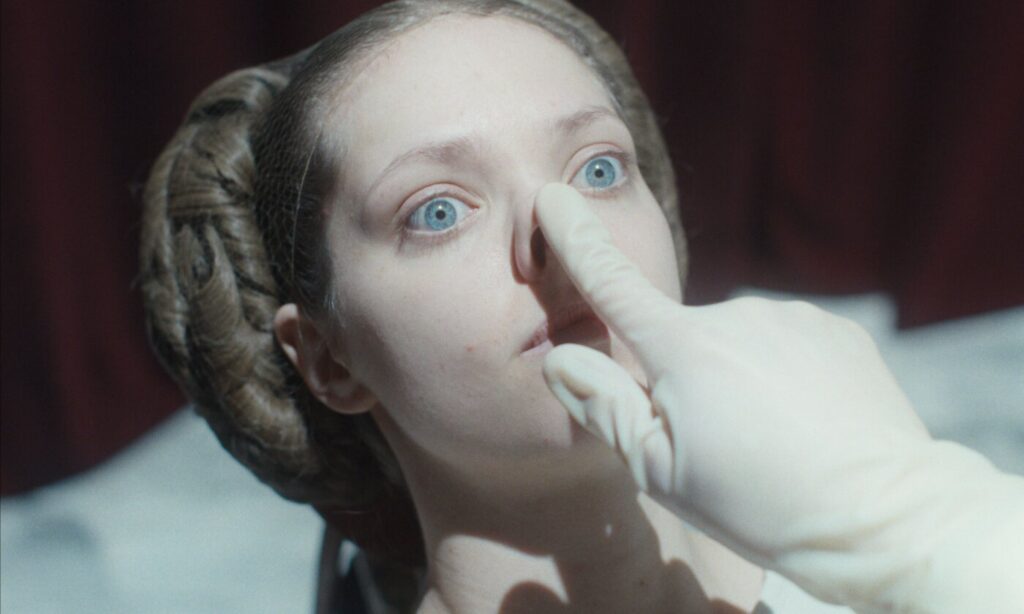
The bleakness is felt in the colour grading, which flips from dreamy soft pinks and oversaturated 70s style pigments to firelight and dull Gothic-inspired greys to symbolise Elvira’s descent into obsessive self-destruction. Clinical stark lighting eerily brightens Elvira’s terrified face as Dr. Esthétique swipes cocaine along her eyelids (an actual practice) before blood fills the frame as he sews individual eyelashes into her flesh. Seemingly, outer beauty is merely a façade concealing blood, tears, and crazed desperation. With inspiration from David Cronenberg’s horror filmography, Blichfeldt envisions the harrowing pain of living in a body that society deems imperfect.
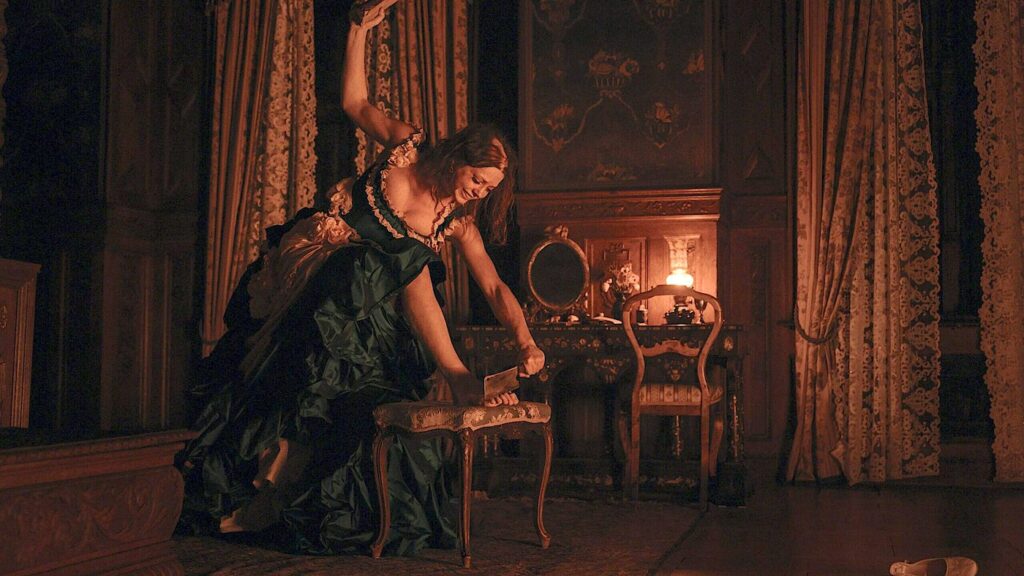
Lea Myren’s acting performance is a stand-out. I’m not surprised she won the Amanda Award for Best Debut Performance. Myren expertly captures Elvira’s shift from child-like curiosity to violent desperation. You can almost imagine you’re sitting in Elvira’s chair from her bulging eyes and earth-shattering screams as Dr. Esthétique drives a chisel into her nose. You also feel immense frustration and envy towards Cinderella, the ideal feminine figure. And you cower at Myren’s wide, manic grin as she determinedly clutches the butcher’s knife and aligns Cinderella’s too-small slipper to her right foot. Yet Myren still provokes viewers’ pained sympathy as Elvira is left as a shell of herself in her quest for physical perfection. Myren makes us question whether Elvira is the villainess, a heroine or the victim, and I think she’s a bit of all three. It takes a truly talented actress to execute that.
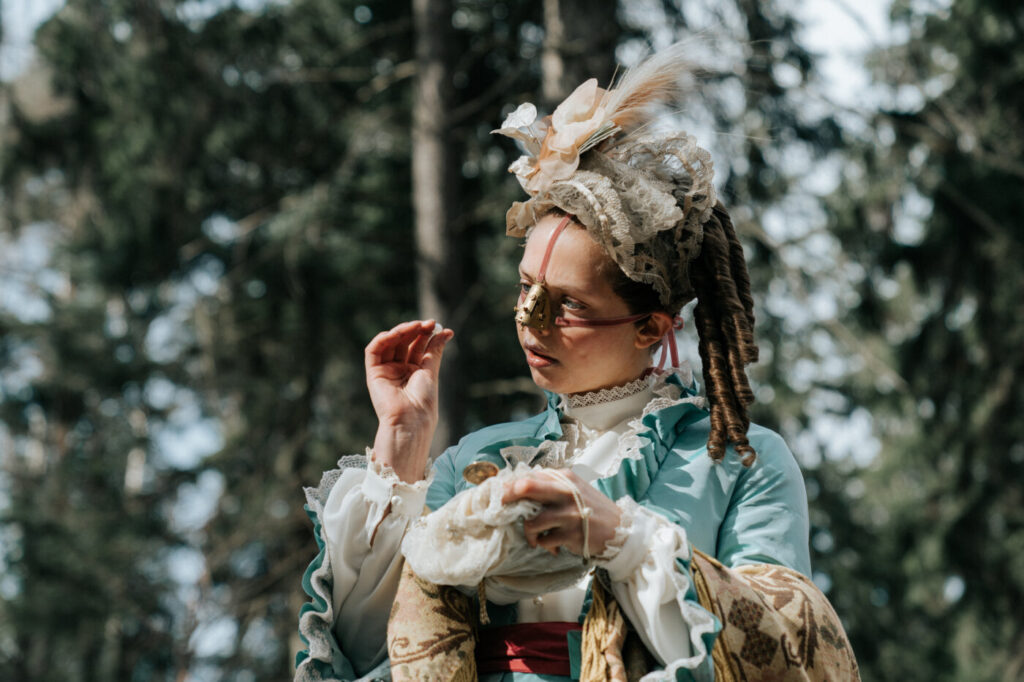
In an interview, Blichfeldt praises her VFX supervisor, Peter Hjorth, and I praise him too. The film’s shocking climax took one day to shoot and uses revolting, gut-churning practical effects to depict the tapeworm finally exiting Elvira’s body. Truly, you won’t want to eat after this scene. But it perfectly represents Elvira’s body finally rejecting the toxic, socially constructed versions of beauty force-fed to her. It symbolises her freedom from the shackles of these unrealistic ideals – a message Blichfeldt hopes resonates with young women.
The Ugly Stepsister exaggerates the price of beauty. No, we aren’t chopping off toes to fit on slippers and ingesting tapeworms. But the message is powerful enough. Blichfeldt knows we’re far from Cinderella’s fairytale, and the nightmarish reality of contemporary beauty ideals is real, with a bloody cost.
